“Most young kings
get
their heads
cut off.”
- Jean-Michel
basquiat

Basquiat was born on December 22, 1960, Brooklyn, New York City. Jean's mother instilled a love for art in her young son by taking him to local art museums and enrolling him as a junior member of the Brooklyn Museum of Art. Basquiat was a precocious child who learned to read and write by the age of four. His mother encouraged her son's artistic talent and he often tried to draw his favorite cartoons. After his parents separated his mother was committed to a psychiatric hospital when he was ten and thereafter spent her life in and out of institutions.
At the age of eight, Basquiat was struck by a car. While in the hospital recovering from surgery, his mother brought him the book "Gray's Anatomy". Basquiat was moved by the book that it'd later serve inspiration for his artwork.
anatomy
anatomy
anatomy
“I was a really lousy artist as a kid. Too abstract expressionist; or I'd draw a big ram's head really messy. I'd never win painting contests. I remember losing to a guy who did a perfect Spiderman.”
In the 70s, Jean-Michel and friend Al Diaz began spray-painting graffiti on buildings in Lower Manhattan area under the pseudonym “SAMO.” Basquiat's early art wasn't actual images, but peculiar messages of a non-religious and non-political nature. Basquiat and Diaz combated social issues. The era of “SAMO” ended when Diaz and Basquiat split and went their separate ways. As the two fell apart, Basquiat altered the art by stating "SAMO IS DEAD."
From here, he went on to make a name for himself as an artist in his own right, exhibiting in “The Times Square Show” in June 1980, where he caught the attention of several art critics and curators. Basquiat painted on any surface he could find. Discharged objects that were considered worthless were turned to wonderful pieces of art.
“For a while, I was drawing on good paper, but now I’ve gone back to the bad stuff. If you put matte medium on it, it seals up, so it doesn’t really matter.”
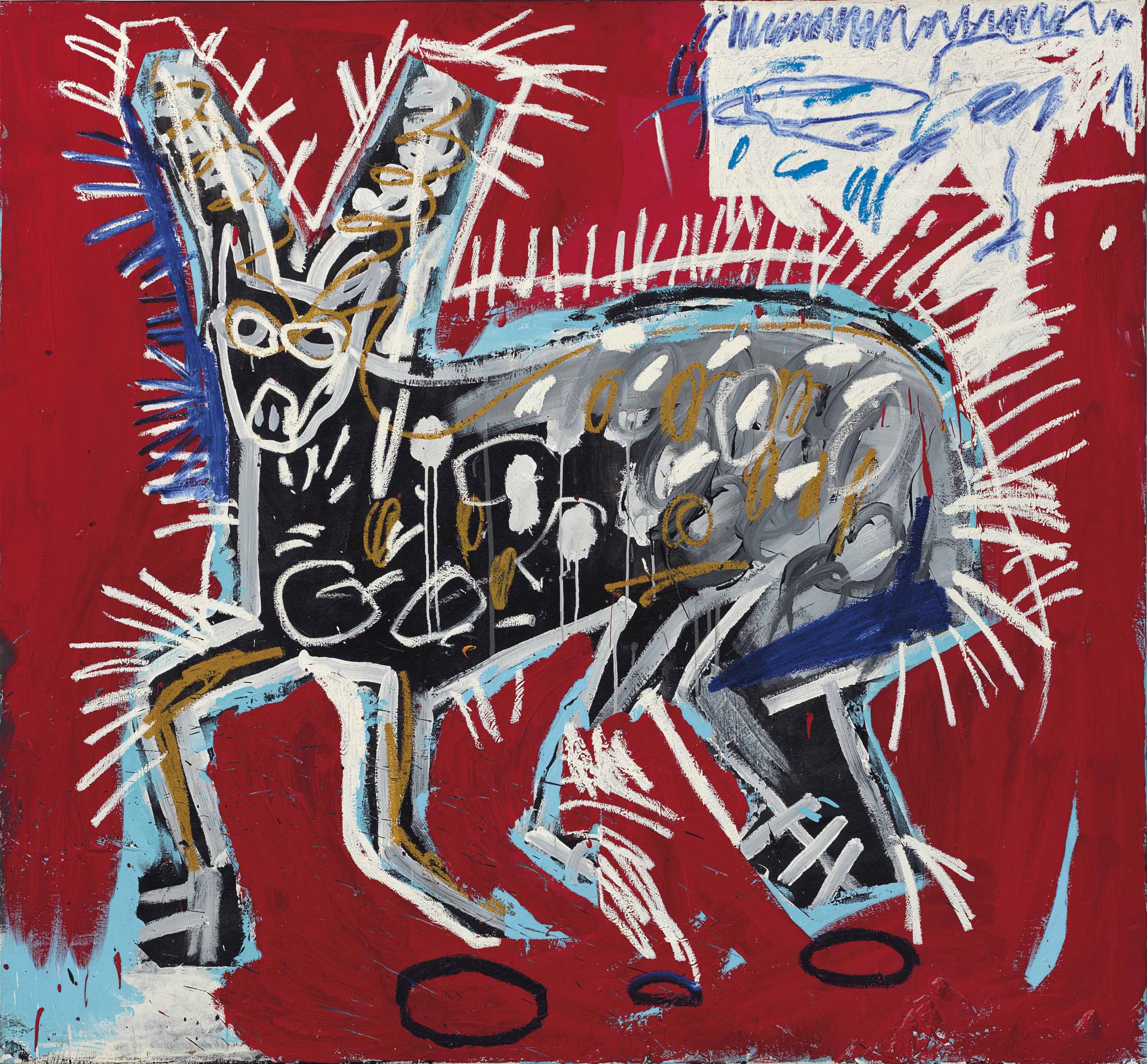
After seeing the exhibition, the Italian gallerist Emilio Mazzoli invited Basquiat to Modena for his first solo show in 1981. In the same year, Artforum published an article about Basquait entitled “The Radiant Child”.
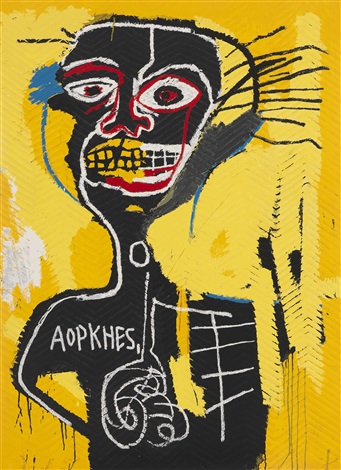
Neo-Expressionism is defined as the a revival of expressionism in art characterized by intense colors, dramatic usually figural forms, and emotive subject matter.
Basquiat sold his first painting, Cadillac Moon (1981), to Debbie Harry, lead singer of the punk rock band Blondie. At the time, Basquiat was living with his girlfriend, who financially supported him.In September 1981, art dealer Annina Nosei invited Basquiat to join her gallery. Soon after, he participated in her group show Public Address. She provided him with materials and a space to work in the basement of her gallery. He had his first American one-man show at the Annina Nosei Gallery in March 1982. He also painted in Modena for his second Italian exhibition in March 1982. Feeling exploited, that show was canceled because he was expected to make eight paintings in one week. By the summer of 1982, Basquiat had left the Annina Nosei Gallery and gallerist Bruno Bischofberger became his worldwide art dealer. In June 1982, at 21, Basquiat became the youngest artist to ever take part in documenta in Kassel, Germany. His works were exhibited alongside Joseph Beuys, Anselm Kiefer, Gerhard Richter, Cy Twombly and Andy Warhol.
Bischofberger gave Basquiat a one-man show at his Zurich gallery in September 1982, and arranged for him to meet Warhol for lunch on October 4, 1982. Warhol recalled, "I took a Polaroid and he went home and within two hours a painting was back, still wet, of him and me together." The painting, Dos Cabezas (1982), ignited a friendship between them. The pair collaborated on works between 1983 and 1985,
with Warhol helping to boost Basquiat into the art “establishment” of the time, and Basquiat helping to rejuvenate Warhol’s image. In November 1982, Basquiat's solo exhibition opened at the Fun Gallery in the East Village. Among the works exhibited were A Panel of Experts (1982) and Equals Pi (1982). Later that month, Basquiat began working at the studio space art dealer Larry Gagosian had built.
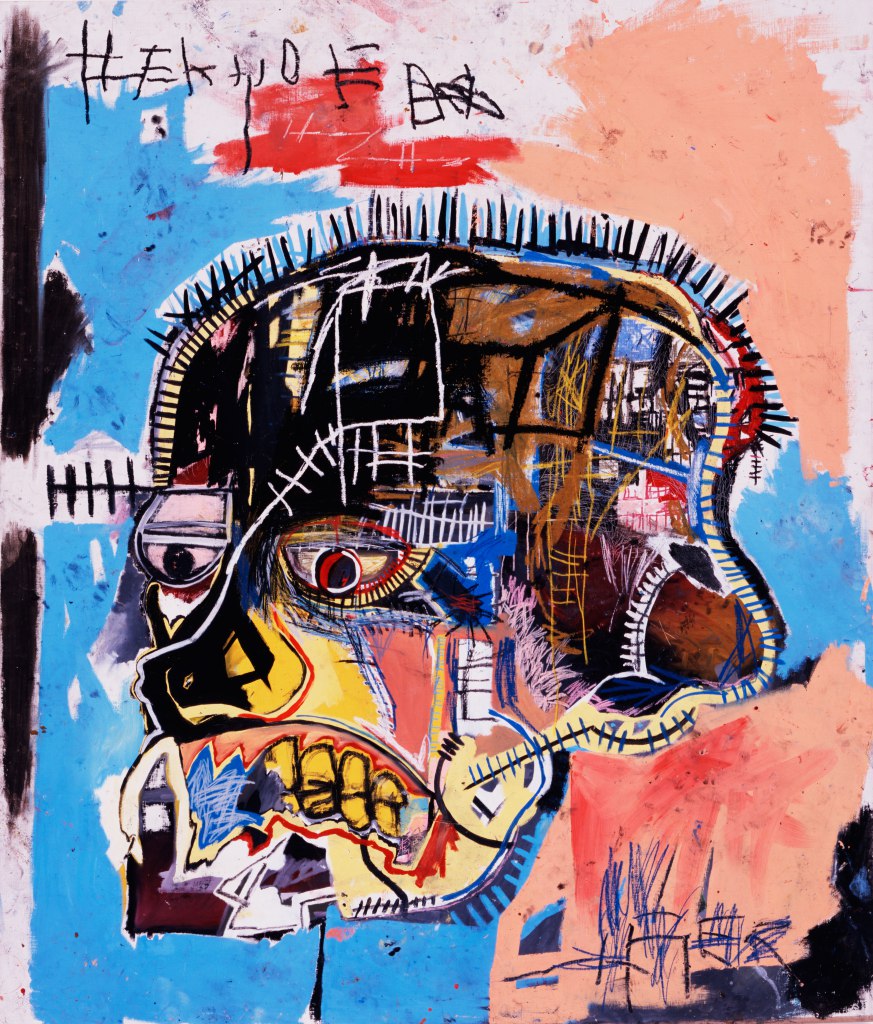
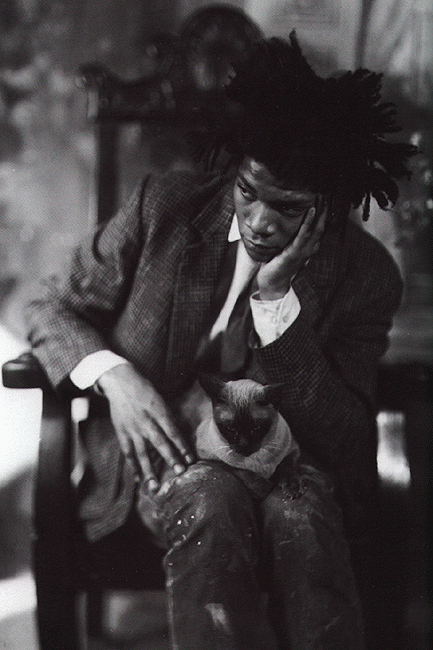
dos
cabe
zas
dos cabezas
In the last 18
months
of his
life,
Basquiat became
something
of a recluse.
His continued
drug use
“I had some money, I made the best paintings ever. I was completely reclusive, worked a lot, took a lot of drugs. I was awful to people.”
is thought to
have been
a way of coping
after the
death
of his friend
Andy Warhol
in February
1987.


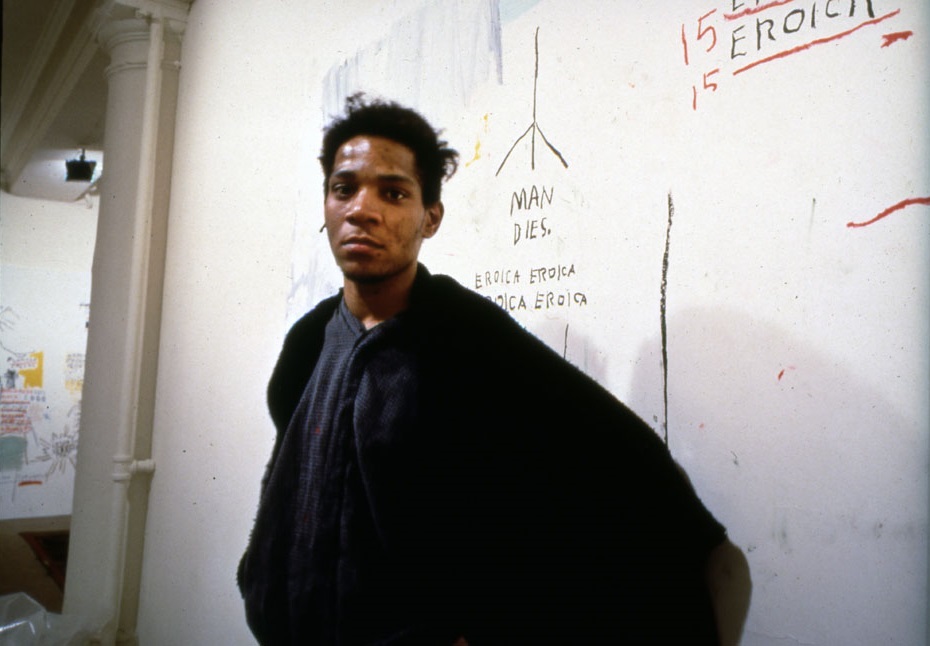
man dies.
Following his exhibition in New York in April 1988, Basquiat traveled to Maui in June to withdraw from drug use.
After returning to New York in July, Basquiat ran into Keith Haring on Broadway, who stated that this last encounter was the only time Basquiat ever discussed his drug problem with him. Glenn O'Brien also recalled Basquiat calling him and telling him he was "feeling really good."
As he was lead more into addiction, he sought out help, but unfortunately it was to late. Basquiat died at the age of 27 of a heroin overdose at his home on Great Jones Street in Manhattan on August 12, 1988. Basquiat is buried at Brooklyn's Green-Wood Cemetery. A private funeral was on August 17, 1988.
man dies.
A public memorial was held at Saint Peter's Church on November 3, 1988.
Basquiat's former girlfriend Suzanne recited sections of A. R. Penck's "Poem for Basquiat". In memory of the late artist, Keith Haring created the painting "A Pile of Crowns for Jean-Michel Basquiat". In the obituary Haring wrote for Vogue, he stated: "He truly created a lifetime of works in ten years. Greedily, we wonder what else he might have created, what masterpieces we have been cheated out of by his death, but the fact is that he has created enough work to intrigue generations to come. Only now will people begin to understand the magnitude of his contribution"